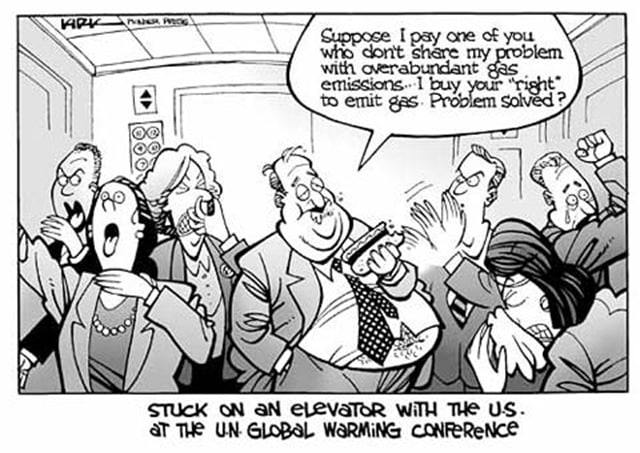As the book convincingly demonstrates, carbon trading, market-based policy tool, has failed. To those who understand that governments place profits before human needs this failure was predictable. But for the huge majority of thinking and caring people, this book will provide ample information to make up their own mind about carbon trading as a tool to combat climate change and enable to consider other, more direct, options to save the planet from capitalist greed.
Below please find the "Introduction" to the book. The book is available in PDF format for free download:
The English version is available to download here:
http://www.fern.org/
The French version is available to download here:
http://www.fern.org/node/4815
To order a hard copy in French or English contact Julie@fern.org
* * *
Carbon Trading: How It Works and Why It is Controversial
By Jutta Kill / Saskia Ozinga / Steven Pavett / Richard Wainwright
Introduction
In the drive to tackle climate change, carbon trading has become the policy instrument of choice among governments. It is also a central element of the UNFCCC’s Kyoto Protocol. National or regional carbon trading schemes are now operational in Europe, the USA, New Zealand and elsewhere. Yet carbon trading remains highly controversial. Some see it as a dangerous distraction and a false solution to the problem of climate change. Unfortunately the subject is characterised by jargon, abstract concepts,mathematical formulae and technical detail, making it hard for most people to understand its implications and assess its merits or otherwise. This guide attempts to unravel some of this complexity.
To put it simply, carbon trading is the process of buying and selling of quotas that allow the holder of the quota to emit the equivalent of one tonne of CO2. So if a company’s or a country’s emissions are lower than its quota, it can sell its surplus. If it exceeds its limits, on the other hand, it will have to buy additional quota on the market or cut its production. This report deals with each of the three basic components – cap and trade,
carbon offsets and trading transactions – which underpin the trade in carbon quotas.
Chapter 1 explains how the concept of carbon trading came about.
Chapter 2 explains the theory of cap and trade – also sometimes referred to as emissions trading – and looks at how the Kyoto Protocol set in motion the widespread use of carbon trading schemes. It also examines the European Union’s Emissions Trading Scheme (ETS).
Chapter 3 explains the theory behind carbon offsets, including case studies of specific offset projects that are linked either to the Kyoto Protocol’s Clean Development Mechanism (CDM) or voluntary carbon offset schemes.
Chapter 4 describes the financial aspects of carbon trading. It explains how the carbon market changed as it matured, and how new interest groups and increasingly complex financial arrangements shape the carbon market today. There is a section explaining the key financial terms, and showing how their use has influenced the carbon market. The chapter also explores how complex financial instruments and new actors make prices more volatile, lead to greater speculation in the carbon market, and increasingly delink the development of the carbon market from its original objective of providing an effective cost-management tool for companies required to reduce greenhouse gas emissions.
The glossary explains the key concepts and terms in plain English. Although at FERN we have our own opinion on why carbon trading does nothing to avert climate change, we believe it is important for readers to make up their own minds. At the end of Chapters 2 and 3, therefore, we present some of the arguments used by proponents of carbon trading, followed by counter-arguments. The discussion points we have selected cannot be exhaustive, but we hope we have tackled the main areas. We welcome discussion on other arguments which readers feel should have been included. We hope the guide will be useful both to those who want to understand carbon trading purely as a mechanism, and to those who want to strengthen their arguments against.
August 2010

No comments:
Post a Comment